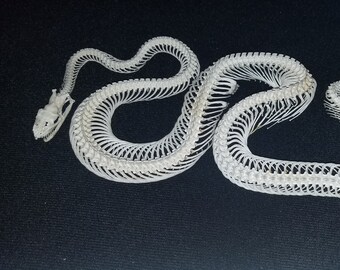

The cookie is used to store the user consent for the cookies in the category "Other. This cookie is set by GDPR Cookie Consent plugin. The cookies is used to store the user consent for the cookies in the category "Necessary". The cookie is set by GDPR cookie consent to record the user consent for the cookies in the category "Functional". The cookie is used to store the user consent for the cookies in the category "Analytics". These cookies ensure basic functionalities and security features of the website, anonymously.

The publication contributed the article to Live Science's Expert Voices: Op-Ed & Insights.Necessary cookies are absolutely essential for the website to function properly. This article was originally published at The Conversation. This is a far cry indeed from the idea that snakes could have evolved from tiny, blind, worm-like, small-mouthed ancestors no known fossils of ancient snakes resemble at all the supposedly primitive, small-mouthed scolecophidians. In short, the skull of Najash tells us that ancestral snakes were very similar to some of their close lizard relatives, such as big-bodied, big-headed lizards like Komodo dragons. What happens as a result is that an old hypothesis is falsified and a new one is verified. Hypotheses such as the presence of a jugal in snakes can be supported by the discovery of new data that fulfil those predictions. These new specimens of Najash are an excellent example of the predictive power of science. It is the postorbital bone that has been lost, not the jugal. This demonstrates that the lower bar of the jugal was lost through snake evolution, leaving behind a rod-like jugal in modern snakes. The bone below the orbit in Najash has the same shape, position and connections as the L-shaped jugal of more typical lizards.

The new skull of Najash demonstrates conclusively that this is not correct. The idea followed that the jugal was absent in all snakes, fossil and modern. For example, for a very long time, the rod-like bone located behind the eye of modern snakes - called the jugal - was thought to be the equivalent of the postorbital bone of their lizard ancestors. Scientific predictionĬritical information is also preserved in the bone-by-bone details preserved in these new fossils of Najash. In evolutionary terms, Najash tells us that snakes were evolving towards the skull mobility necessary to ingest fairly large prey items, a landmark feature of many modern snakes. However, they still retained some bony skull features of more typical lizards. Instead, Najash and its kind had large mouths with sharp teeth and some of the mobile skull joints that are typical of most modern snakes. The new Najash fossil material shows that the skulls of that lineage of ancient snakes were nothing like those of scolecophidian snakes. A group of small, worm-like, small-mouthed burrowing snakes, known as scolecophidians have long been considered to be the most primitive living snakes. (Image credit: Fernando Garberoglio)Ī long-standing hypothesis is that snakes evolved from a blind, burrowing lizard ancestor. The new fossil skull of Najash from Argentina. Today, the long hunt has produced its reward of a treasure trove of new skulls and skeletons of Najash from the fossil rich sites at La Buitrera. It has been 13 years since Najash was named, and seven years since Fernando's discovery.

Rougier asked to inspect the fossil himself and found that, to his surprise, Garberoglio was right - there it was, an almost complete, 95 million year old, 3D preserved snake skull. Particularly when, as happened to Garberoglio, he finally picked up a pebble, only a few centimetres long, to find a small, ancient, bony face staring back at him. At La Buitrera, you are scorched by the hot sun, pelted by driving rain and frozen by chilly Andean winds.īut it's all worth it. You must pick up each piece, inspect it closely, put it down and then repeat, hour after hour. It requires you to be close to the ground, scanning the grit, pebbles, rocks and sediments for a sign of bone. Looking for fossil vertebrates is an act of patient, painstaking discovery. With him were two palaeontologists: Sebastián Apesteguía, from the Universidad Maimónides, and Guillermo Rougier, from the University of Louisville. It was a hot day in February of 2013 when Fernando Garberoglio, then an undergraduate palaeontology student from the Universidad de Buenos Aires, went on his first field trip to the La Buitrera Paleontological Area in northern Patagonia, Argentina. Here, the scientists in the process of removing sediment in order to extract fossils contained in the rock at La Buitrera.


 0 kommentar(er)
0 kommentar(er)
